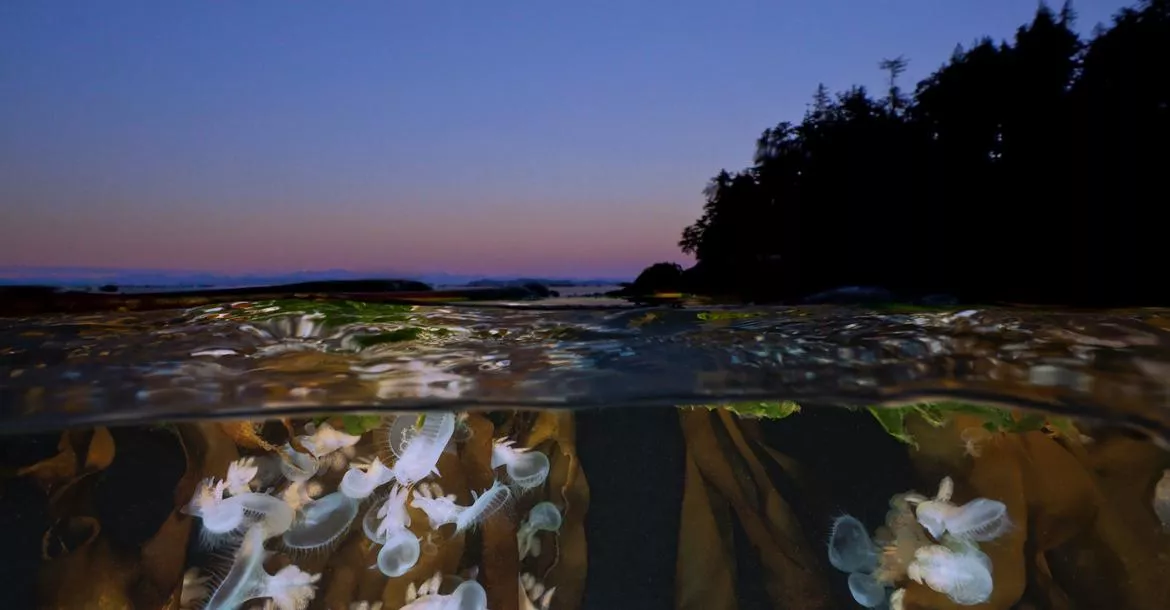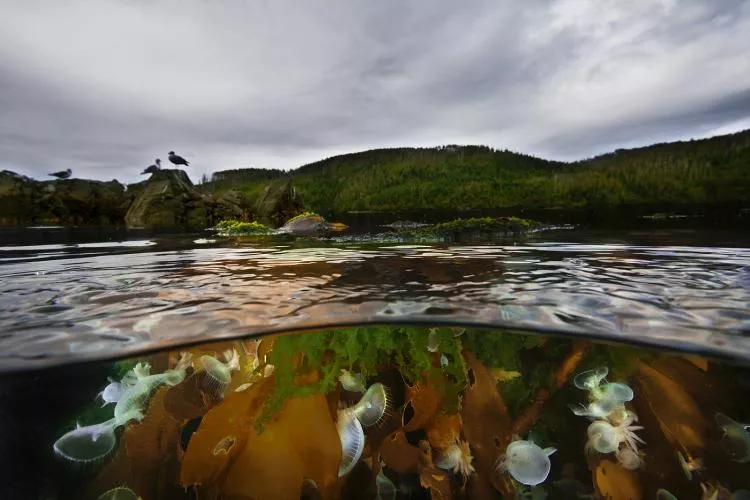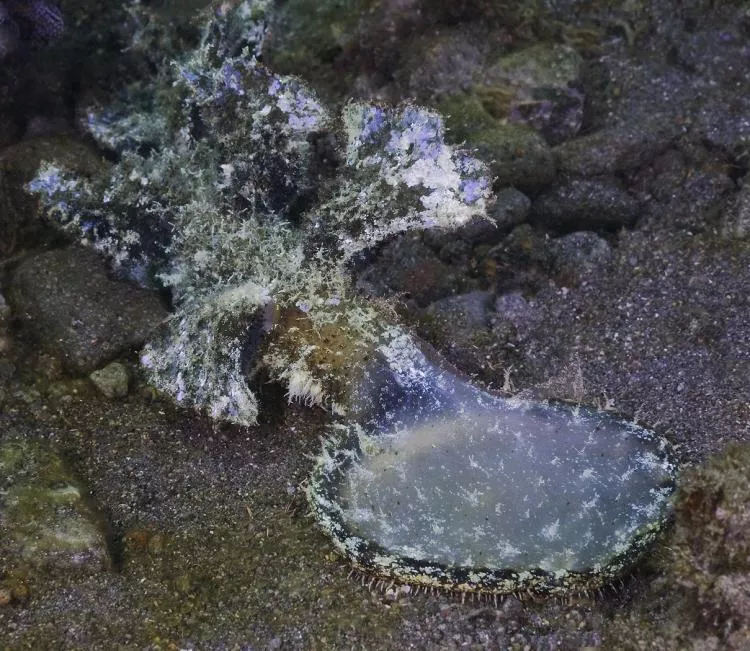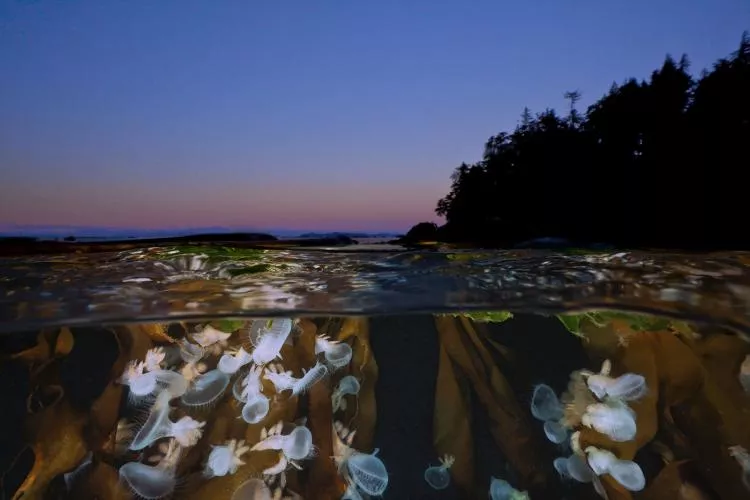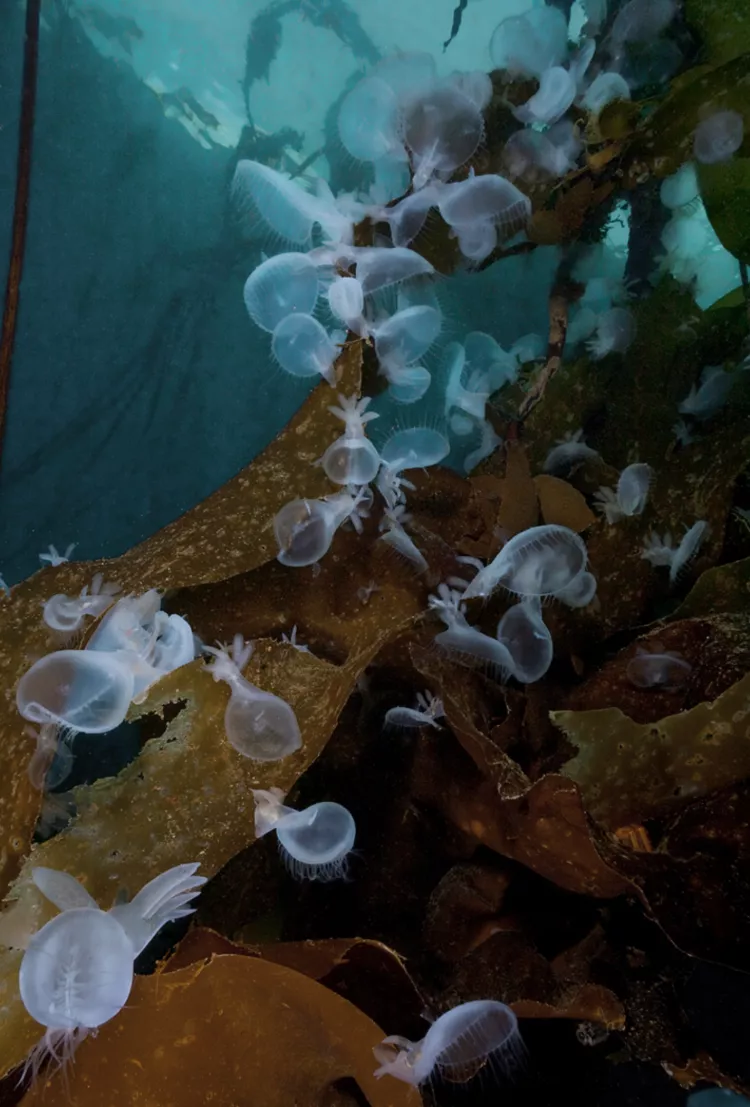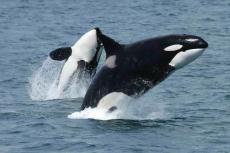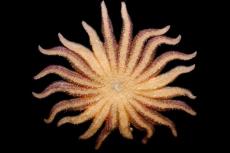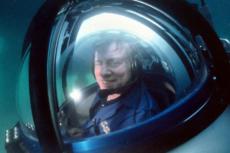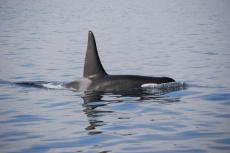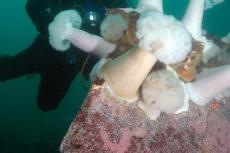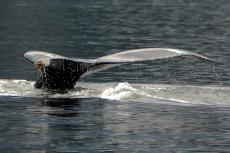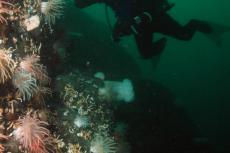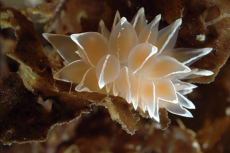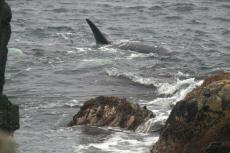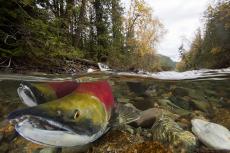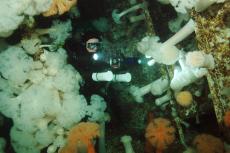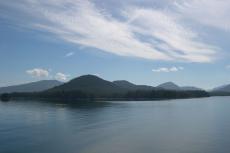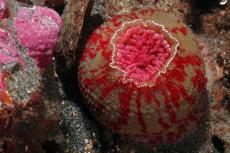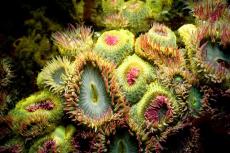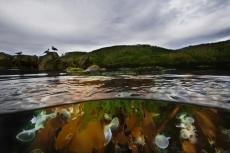Weird creatures from inner space.
Contributed by
This strange-looking creature, Melibe leonine, is one of the most characteristic members of the Opisthobranchia. It most notable feature is the large expandable muscular oral hood, fringed with sensory tentacles, which it opens and throws forward in order to catch food in matter similar to a fisherman with a catch net. It is also known as the Lion Nudibranch because of the hoods likeliness to that of a lion’s mane.
This species feeds on just about anything that is unfortunate enough to swim in front of its gaping head, and its diet includes copepods, amphipods and ostracods, as well as small post-larval molluscs. This species hunts mainly attached but is a good swimmer when harassed or dislodged. The animal stands attached to the substrate (often a blade of eelgrass or kelp) and expands the oral hood ahead of itself to trap prey. It then sweeps the hood left and right or downward. When the ventral surface of the hood contacts a small animal, the hood rapidly closes, and the fringing tentacles overlap, holding the prey in. The whole animal is then forced into the nudibranch’s mouth.
This spectacular nudibranch can seasonally be found in large numbers on kelp—particularly in kelp beds south of the Puget Sound—and sometimes ‘swimming’ in coastal waters. When swimming, it is usually upside-down, and thrashes or undulates back and forth. It is often seen swimming near the water’s surface in the summer, or after fall and winter storms disturb the eelgrass.
The wide flattened cerata (fringes) of this species are easily detached when disturbed by fish or predators, as a defensive mechanism, inviting the predator to follow the detached body part drifting in the current, rather than stay around and hassle the animal itself. Animals are often found with some or all the cerata missing or in a state of regrowth. Predators may include fish, kelp dwelling crabs and sea stars.
This species occurs on the west coast of North America, from Alaska to Baja California. Eggs can be found in the Washington state area at any season. The eggs are attached to kelp and eelgrass in long, wide yellow or cream-colored ribbons, which form tight coils or wavy folds.
Melibe leonina has a sweet fruity aroma, which you can smell throughout the room when a number of them are in a tank. It tends to ‘get to you’ like a bad perfume. They are gregarious animals and probably use it to keep together. ■

